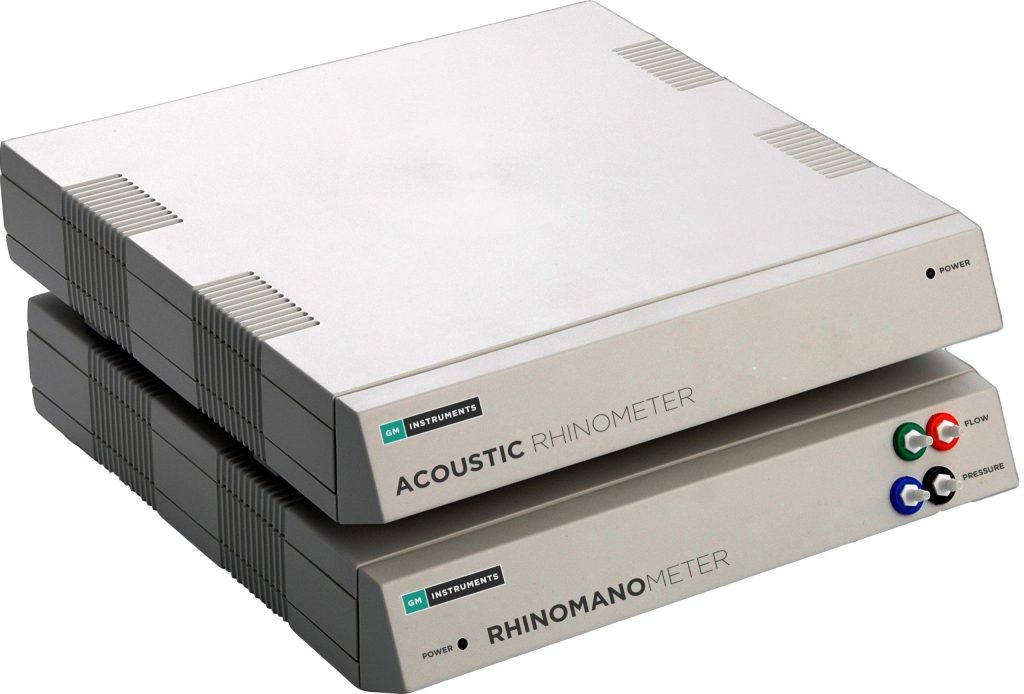
Objectively Evaluate Nasal Form and Function with the NARIS System
The nasal airway is a critical, often-overlooked component of comprehensive dental care. The NARIS diagnostic suite provides the essential tools to objectively measure nasal anatomy, airflow, and resistance, empowering you with the data needed for successful treatment planning and collaborative care.
Understanding if and how well a patient can breathe through their nose is vital. Compromised nasal breathing can significantly impact craniofacial development, posture, and the success of oral appliance therapy for sleep apnea. The NARIS system allows you to move beyond subjective observation to quantifiable data, leading to better diagnoses and improved patient outcomes.
Why Nasal Airway Assessment is Crucial for Dentistry:
- Success of Oral Appliance Therapy (OSA): A patent nasal airway is a prerequisite for successful OSA treatment. Objectively verify if nasal obstructions will impede therapy before you even begin.
- Craniofacial Development: In pediatric patients, chronic mouth breathing due to nasal obstruction can lead to improper facial growth, high palatal vaults, and malocclusion.
- TMD & Postural Issues: Altered breathing patterns can affect head and neck posture, which is often a contributing factor to temporomandibular disorders.
- Informed Collaborative Care: Generate clear, objective data to facilitate effective referrals to ENTs and allergists, ensuring your patients receive maximum treatment success.
The NARIS Diagnostic Suite: A Two-Part Evaluation
The NARIS system provides a complete picture of the nasal airway by combining two distinct, non-invasive technologies.

1. Acoustic Rhinometry: Mapping Nasal Anatomy (Form) This technique uses sound pulses to map the physical dimensions of the nasal cavity. It provides a clear, graphical representation of the nasal airway’s cross-sectional area, allowing you to instantly identify the location and severity of any constrictions.
- Technology: GMI Acoustic Rhinometer R3
- What it Measures: Nasal cavity volume and cross-sectional area from the nasal valve to the nasopharynx.
- Clinical Insights: Immediately visualize obstructions caused by a deviated septum, enlarged turbinates, or nasal valve collapse.
2. Rhinomanometry: Measuring Nasal Airflow (Function) This technique directly measures how well a patient can actually breathe. By recording air pressure and flow rate during respiration, it quantifies nasal resistance, providing a functional assessment of the airway.
- Technology: NR6 Rhinomanometer
- What it Measures: Nasal airway resistance (pressure/flow relationship).
- Clinical Insights: Objectively determine if the patient’s breathing is within normal functional limits or if anatomical constrictions are causing significant airway resistance.
In-Depth Look: The NR6 Rhinomanometer
The NR6 is a state-of-the-art clinical tool for assessing nasal function, compliant with International Standardization Committee guidelines.
Key Capabilities:
- Performs both active Anterior and Posterior Rhinomanometry.
- Displays resultant curves in the standard 4-phase format.
- Calculates and displays Rohrer coefficients or the Broms angle for in-depth analysis.
- Available in a Clinical Version for patient care and a Clinical/Research Version with expanded hardware and software facilities.
Clinical Software Features:
- Patient Database: Securely holds patient details and stores all test results chronologically.
- Result Comparison: Overlay previous test results with current ones to graphically display changes (e.g., pre- and post-treatment) and calculate percentage change.
- Valve Collapse Diagnosis: A dedicated facility helps determine if nasal valve collapse has occurred by analyzing flow at various points on the curve.
- Guided Diagnostics: Software analysis, based on published work, provides guidance on the category of obstruction to support clinical diagnosis.
